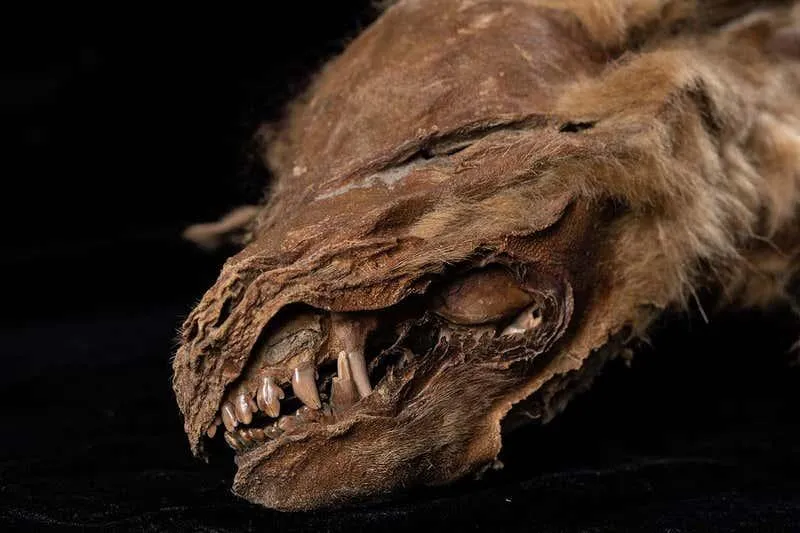A 57,000-Year-Old Mummified Wolf Pup Was Discovered Frozen in Yukon Permafrost
The specimen sheds light on how different gray wolf populations migrated through North America
/https://tf-cmsv2-smithsonianmag-media.s3.amazonaws.com/filer/4d/ac/4dac7f9a-adbf-4697-b4b9-582c66295b7f/this-photo-shows-a-full-view-of-the-wolf-pup-mummy-credit-government-of-yukon.jpg)
Four years ago, a gold miner in Canada's Yukon territory was excavating for the precious metal when he used a water cannon to blast through a slab of frozen mud. But instead of striking gold, he unearthed something even more precious—to paleontologists, at least—when the mud exposed a nearly perfectly preserved 57,000-year-old female gray wolf pup, reports Ibrahim Sawal for New Scientist.
The mummified wolf was found on the ancestral land of the local Tr'ondëk Hwëch'in people, who named her Zhùr, meaning "wolf" in the community's language, reports James Gorman for the New York Times.
"She's the most complete wolf mummy that's ever been found. She's basically 100% intact—all that's missing are her eyes, Julie Meachen, a paleontologist at Des Moines University in Iowa, says in a press release. "And the fact that she's so complete allowed us to do so many lines of inquiry on her to basically reconstruct her life."
Zhùr has been frozen in permafrost for thousands of years, sealed away from air and moisture. As a result, her body was so well preserved in the icy ground that scientists were able to get a glimpse into what her life was like. Their findings were published on December 21 in the journal Current Biology. According to Meachen, the ancient pup is "the oldest, most complete wolf that's ever been found," she tells CNN's Amy Woodyatt.
The team of scientists could clearly see that Zhùr was female, and X-rays revealed that she was around six or seven weeks old when she died, reports the Times. Plus, geochemical signatures on her teeth revealed that she ate mostly fish and other aquatic critters instead of large mammals like caribou or bison, reports Riley Black for National Geographic.

Zhùr was also in good shape, so she didn't starve to death or get mauled by another predator. Instead, she was likely in her den when it collapsed on her, entombing her in sandy earth, reports Kiona N. Smith for Ars Technica.
Despite her life being cut short, Zhùr has provided a glimpse into what wolves were like thousands of years ago in what is now the Yukon territory. DNA analysis revealed that Zhùr descends from an ancient wolf population, ancestors of the gray wolves that originated in Siberia, Russia and Alaska, reports CNN.
But Zhùr's population no longer exists in the Yukon area, suggesting that her population—the first to move into the region—were wiped out and replaced with another, reports National Geographic.
"[Zhùr] is truly an ancient wolf, and she was related to all the wolves around her at the time," Meachen tells CNN. "But the cool thing about that, that most people might not know, is that wolves in the ice age were only distantly related to wolves that are around today. They are still the same species, but they are very different, for being in the same species."
Discovering Zhùr is especially important since there are very few frozen mummies found in North America. There have been other ancient wolf remains found in places like Siberia, but finding a well-preserved specimen in Yukon is rare since the ground has to be permanently frozen and the animal must be buried quickly.
As climate change intensifies, scientists are expecting to unearth even more once-frozen animals. Melting ice and thawing permafrost have already revealed a colony of mummified penguins, an Ice Age cave bear, ancient cave lion cubs and an extinct baby horse.
/https://tf-cmsv2-smithsonianmag-media.s3.amazonaws.com/accounts/headshot/rasha.png)
/https://tf-cmsv2-smithsonianmag-media.s3.amazonaws.com/accounts/headshot/rasha.png)